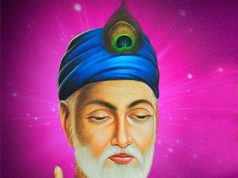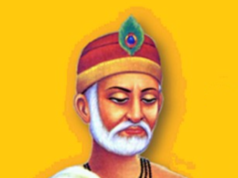The identity of India is not devoid of the identities of Hindu, Muslim, Christian and the rest. It is the integrating principle of cultural consciousness lived out by the people in their everyday life
You do not require an anthropologist to tell you that the general population of India has its sensibilities and consciousness ‘rooted’ into the ‘inherited’ cultural identity. No matter what the dissenting, anti-tradition, so called liberalists shout against these traditional indicators of identity, the common people of the country, at large, would resist this ‘dissenting determinism’ as ‘alienating rationality’. This ‘rootedness’ is not coercion and is not obligatory. Unlike what some may perceive it to be-a compulsion and burden of inheritance to find themselves a space for dissent—the everyday life of the real people is rather wistfully ‘rooted’ into the eternally contemporary ‘flow’ of the distinct culture of India. It is the inherent and behavioural form of the people’s culture rooted into the way of life and its social manifestation is the motivation to general population which regards India as one nation.
The identity of India is not devoid of the identities of Hindu, Muslim, Christian and the rest. It is the integrating principle of cultural consciousness lived out by the people in their everyday life. There may be some deeper sense of one’s own spirituality being the most satisfying faith to oneself but the overt manifestation of everyday culture transcends the diverse central beliefs forming a pan Indian cultural consistency. The sense of nationhood of the people of India is the integrating aspect of different faiths. This integrating principle is not formulated by any individual or community. Its bedrock is not a scripture, religion, academic theories or a manifesto. It is the very character of us, the people of India. There can be no complete idea of India through an indifferent and antagonistic approach to these identities as the idea of India is complete only through the realisation of an integration of these identities into one nation.
A nation is its people, a cohesive mass of varied identities, not an incoherent mess of fragmented individualities. People live their life independent of the academic deliberations which often take a critical view of the choices people make for themselves. This critical view of popular culture adopts a strategy of derision making it ever repulsive. The decentralised, regionally manifested observance of oneness has nurtured our nascent cohesive character. This ‘Oneness’ is the ethos of our life in India. This ethos does not ‘admit impediments’ to the integration of ‘true minds’. This ‘truth’ of ‘integrated minds’ sources the feeling and understanding of ‘Oneness’ in the minds of people and in their everyday life. This ‘Oneness’ of Truth does not mean its ‘Singularity’. ‘Singularity’ of truth requires an observance of the justness of ‘only one’ truth whereas ‘oneness’ suggests a cohesion. The Hindu way of life as reflected in the writings of V.D.Savarkar, M.S.Golwalkar and K. Sudarshan, the ‘Integral Humanism’ of Pandit Deendayal Upadhyay and the core philosophy of Hindutva envisages this ‘oneness’ of varied cultural identities into a consciousness of ‘nationhood’. This ‘oneness’ is far from being recognised as the provincial, determining, appropriating and ascribing theory of ‘Singular’ conclusions executed as ‘dissent’ for its own sake as a means of perpetuation of ‘one’s own’ and ‘only one’, ‘Singular’ ideological choice.
The academically disseminated theories of culture rooted into the highbrow nonchalance of scholars or historians, thanks to their conjectural reflexions, are often found to be sourcing this confusion or ‘deterministic appropriation’. These scholars and academicians approach the linguistically and theoretically manifested form as the only reality stated or suggested by that word. They understand culture and its living functions through the form of linguistically made-up contours of reality which are but the ‘representations’ of the real- the ideologically perceived fossils of actual life and culture and its myriad ways as lived out by real people. These real people are unmindful, thankfully though, of this academically administered, linguistically represented expressions of cultural consciousness and ways of life. Their simpler and actual ways of life survive this alienating academic appropriation.
The word ‘single’ is listed as the synonym of the word ‘one’ in dictionaries. However, both words indicate different ideas when applied to culture. The RSS or the entire Hindu population experiences ‘oneness’ as the characteristic consciousness of truth, not the exclusivist Singularity of Truth as emphasised by the Judeo- Christian and Abrahamic religions founded on evangelism and community-teachings.
In fact, Hindutva is not a doctrine, it cannot be provincialised into one, and Hindus do not do that. The RSS upholds the Hindu cause in its cultural and national sense, a sense in which the Hindus live their life “through the cool sequestered Vale of Life”, not in the evangelical, scriptural, academic or philosophical sense and not even in the sense of a narrowly institutionalised ‘religious’ teachings. This is the reason why we witness a ‘continuity of values’ in the life and culture of those who have read the ‘texts’ of Hindu philosophy and also in the life of those who have not read them. This ‘cultural consistency’ springs from the perpetual contemporaneity of the everyday life culture of the people of India, not from the ‘texts’ obliging a ‘Singularity of Truth’. This ‘cultural consistency’ across age—class, castes, community, region, gender, religion, language, faith, politics, ideologies, spirituality—is the pulse of Hindutva and the algorithm of ‘Oneness of Truth’. The proponents of ‘post- truth’ haunted by ‘ghost- truth’ may not be ‘awakened’ to this ‘Oneness’ of India as an expression of inherently liberal ways of Hindutva because their philosophical expostulation compels them to pose an academic ‘Singularity of Truth’.
The social and cultural implications of Hindutva are so broad and non-institutionalised that they are instinctively present in behavioural and socially communicative traits of a Hindu. It is difficult to define this experience in explicit terms. This is something which you live out and may not bother to define since it is already known to you, though not as a definition or as a knowable idea produced by an intellectual. Thankfully certain experiences of life are better lived and experienced than defined or informed. Hindutva is one such experience. It is a whole way of life as you live it out as a Hindu.It is a quintessential understanding of one’s spiritual faiths and cultural and social life one and all.
A civilisation progresses and evolves with a passage of time. Its communicative cultures, linguistic patterns transform and develop through immense influxes which are perpetually operative at the cultural level. Thus the riparian culture that thrived as the Sindhu, Sarasvati and Ganges civilisations, evolved through centuries, developed a common character. Of course, the local touches to the expression of this culture were diverse and marvellously unique. Yet, the ‘spiritually cohesive’ aspects of cultural practices formed a pan Indian cultural harmony in the entire subcontinent called ‘Sanskrutik Bharat’. It was neither imposed nor was it determined. The very fact that there is no scriptural evidence of the word Hindu in ancient literature shows that it did not come into practice through the writing of an individual or through the historical writing of intellectual activist. The word Hindu followed the identity which has always been the ever existent cultural realisation of all the people of this subcontinent known traditionally as Bharatvarsh. The rich and the poor, the dalits and so-called elites, the priestly castes, the warrior, the merchants and wage earners all experienced and exerted this ‘Oneness’ of a cognate cultural identity in their own terms, performed their own unique rituals, worshipped their own deities and this decentralised, regionalised observance of manifestation of Hindutva nurtured its nascent cohesive character. This is the ethos of our life as Hindus. Its reverential expression is Hindutva.
By Prasanna Deshpande
Courtesy: Organiser














